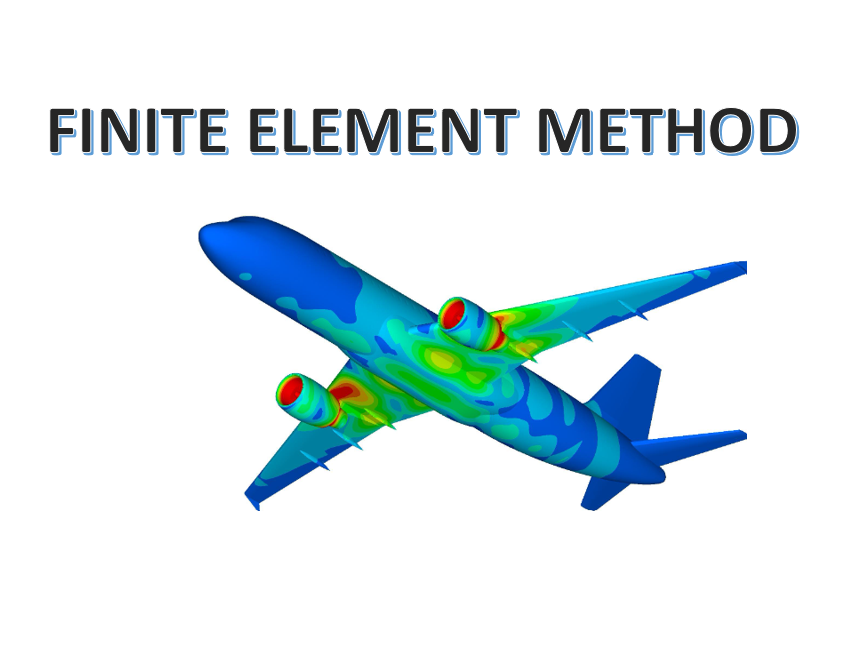
Mastering Finite Element Analysis: A Comprehensive Guide

Team EveryEng
Mechanical Engineering
FREE
208 already enrolled!
Beginner course for learners

Mastering Finite Element Analysis: A Comprehensive Guide
Trainers feedback
4
(42 reviews)
Team EveryEng
Mechanical Engineering
Course type
Watch to learn anytime
Course duration
348 Min
Course start date & time
Access anytime
Language
English
This course format through pre-recorded video. You can buy and watch it to learn at any time.
Why enroll
Unlock the power of simulation with Finite Element Method (FEM) expertise, and supercharge your career in engineering, research, and development! By mastering FEM, you'll become a sought-after professional in fields like mechanical, aerospace, civil, and biomedical engineering, with opportunities for roles like Simulation Engineer, Research Scientist, or Design Engineer. With FEM skills, you'll drive innovation, optimize designs, and solve complex problems, making you a valuable asset in industries like automotive, aerospace, and energy, and opening doors to leadership roles and entrepreneurial ventures.
Course content
The course is readily available, allowing learners to start and complete it at their own pace.
Mastering Finite Element Analysis: A Comprehensive Guide
31 Lectures
348 min
Quadratic Shape Function
12 min
Steps in FEM
8 min
Strain Displacement Matrix for Triangular element
7 min
Element Stiffness Matrix
8 min
Penalty Approach
11 min
Introduction to Shape Function
12 min
Isoparametric Formulation Numerical
4 min
Elimination Approach
15 min
Direct Stiffness matrix
11 min
2 D Finite Element Method
10 min
Weighted Residual Method
18 min
Types of Elements in Finite Element Method
11 min
Introduction of Variational Method
13 min
Global stiffness matrix
18 min
Shape function for CST element
16 min
Properties of Stiffness matrix
11 min
Stress ,Strain Relationship Matrix
10 min
Principle of Minimum Potential Energy
22 min
Galerkin Method
6 min
Advantage ,Disadvantage and Application of FEM
6 min
Gauss elimination method
8 min
Strain Displacement Matrix
7 min
Gauss Quadrature Method
8 min
Plane Stress & Plane Strain
16 min
1 D FEM for Structural Analysis
9 min
Variational method Numerical by Rayleigh Ritz Method
13 min
Shape function in Local and Natural coordinate system
17 min
Isoparametric Formulation for 1-D element
6 min
Sub Domain Method
8 min
Need of Matrix Algebra in FEM
16 min
Properties of Shape Functions
11 min
Course details
The Finite Element Method (FEM) is a powerful numerical technique used to solve partial differential equations (PDEs) governing physical phenomena across various engineering and scientific disciplines. This course provides a comprehensive introduction to the theory, implementation, and applications of the Finite Element Method. Topics covered include finite element discretization, interpolation functions, assembly of element equations, solution techniques, error estimation, and practical considerations in FEM analysis. Through theoretical lectures, hands-on programming exercises, and real-world applications, students will develop a solid understanding of FEM principles and gain proficiency in applying FEM to solve complex engineering problems.
Course suitable for
Automotive Energy & Utilities Mechanics & Turbomachinery Chemical & Process Civil & Structural Piping & Layout
Key topics covered
Types of Elements in Finite Element Method
Advantage ,Disadvantage and Application of FEM
Need of Matrix Algebra in FEM
Gauss elimination method
Direct Stiffness matrix
Global stiffness matrix
Properties of Stiffness matrix
1 D FEM for Structural Analysis
Elimination Approach
Penalty Approach
Principle of Minimum Potential Energy
Introduction to Shape Function
Shape function in Local and Natural coordinate system
Isoparametric Formulation for 1-D element
Properties of Shape Functions
Strain Displacement Matrix
Quadratic Shape Function
Steps in FEM
2 D Finite Element Method
Isoparametric Formulation Numerical
Element Stiffness Matrix
Shape function for CST element
Strain Displacement Matrix for Triangular element
Stress ,Strain Relationship Matrix
Plane Stress & Plane Strain
Gauss Quadrature Method
Weighted Residual Method
Galerkin Method
Sub Domain Method
Variational Method Introduction
Variational method Numerical by Rayleigh Ritz Method
Why people choose EveryEng
Industry-aligned courses, expert training, hands-on learning, recognized certifications, and job opportunities—all in a flexible and supportive environment.
- Industry Veteran
- Trainer Review

Team EveryEng
Mechanical Engineering
Questions and Answers
A: Finite Element Analysis (FEA) is a numerical method used to approximate solutions to complex engineering and physical problems. It involves breaking down a large, complex system into smaller, simpler parts called finite elements, which can be analyzed individually and then combined to approximate the behavior of the entire system. FEA is important because it allows engineers to simulate and predict how structures, materials, and components will respond to real-world forces, vibrations, heat, and other physical effects without needing to build costly prototypes. This accelerates the design process, improves safety, and reduces costs. For more detailed information, you can refer to this comprehensive overview: https://www.ansys.com/products/structures/finite-element-analysis
A: Choosing the appropriate mesh size is a balance between accuracy and computational cost. A finer mesh (smaller elements) generally produces more accurate results but requires more computation time and resources. Conversely, a coarse mesh reduces computational effort but may miss critical details or produce inaccurate results. The decision depends on factors such as: - The complexity of the geometry - Areas experiencing high gradients of stress or strain - The type of analysis (static, dynamic, thermal) - Required accuracy A common practice is to perform a mesh convergence study, where the mesh is progressively refined until the results converge within an acceptable tolerance. For mesh guidelines and convergence practices, see: https://www.simscale.com/docs/simwiki/mesh-convergence-study/
A: Linear finite element analysis assumes that the relationship between loads and responses is linear, meaning that deformations are small, material properties remain constant, and boundary conditions do not change during loading. This simplification allows for faster calculations but may not accurately capture real-world behaviors in many scenarios. Nonlinear finite element analysis accounts for nonlinearities that can arise from: - Material behavior (e.g., plasticity, hyperelasticity) - Large deformations or displacements - Contact problems where boundary conditions change Nonlinear FEA is more complex and computationally intensive but necessary for accurately simulating realistic responses. For an in-depth treatment, refer to https://link.springer.com/chapter/10.1007/978-3-030-23497-1_2
A: Finite elements can be classified based on their dimensionality and shape, including: - 1D elements: Used for beams, trusses, and frames (e.g., line elements) - 2D elements: Used for shells and membranes (e.g., triangular, quadrilateral elements) - 3D elements: Used for solids (e.g., tetrahedral, hexahedral elements) The choice depends on the problem geometry and physics; for example, shell elements are efficient for thin structures while solid elements are better for 3D stress analysis. Each type also has different formulations like linear, quadratic, or higher-order elements to capture varying accuracy and computational power. More detailed descriptions can be found at https://www.autodesk.com/redshift/types-of-finite-elements/
A: Boundary conditions (BCs) are essential for defining how a model interacts with its environment, including constraints (fixed supports, symmetry) and applied loads (forces, pressures, temperature). Incorrectly applied or unrealistic BCs can lead to inaccurate or non-physical results such as zero displacement where movement should occur or illogical stress concentrations. Proper BCs ensure that the model is stable and mimics actual operating conditions. It’s important to carefully interpret the physical situation and apply BCs accordingly. For guidelines on setting BCs, see https://www.caelinux.com/CMS/index.php?option=com_content&view=article&id=121&Itemid=170
A: There are many commercial and open-source FEA software packages tailored to different industries and applications. Some popular commercial tools include: - ANSYS: Widely used for structural, thermal, and multiphysics simulations - Abaqus: Known for advanced nonlinear and explicit dynamic analysis - COMSOL Multiphysics: Offers coupled physics simulations - NASTRAN: Commonly used in aerospace and automotive industries Open-source tools include: - CalculiX - Elmer - Code_Aster The choice depends on budget, problem complexity, and specific features needed. More information and software comparisons can be found at https://www.engineeringclicks.com/best-finite-element-analysis-software/
A: Validation and verification (V&V) are critical steps to ensure the reliability of FEA results: - Verification ensures that the FEA model is implemented correctly by checking the model setup, mesh quality, solver settings, and convergence. - Validation compares simulation results to experimental data or analytical solutions to confirm the model accurately represents reality. Common methods include mesh refinement studies, comparing stress or displacement results to known benchmarks, and performing physical testing. Documentation on best practices for V&V can be found here: https://www.nist.gov/publications/guide-verification-and-validation-computational-models
A: Material properties define how a model responds to loads in FEA. Essential properties include elasticity modulus (Young's modulus), Poisson's ratio, density, thermal conductivity, and plasticity parameters, depending on the analysis type. Accurate input of these properties is vital; incorrect material data can lead to significant errors. Some materials exhibit nonlinear or anisotropic behavior that require advanced material models. Material property data can be obtained from handbooks, experimental testing, or manufacturers. For reference databases, visit https://www.matweb.com/
A: FEA can simulate heat transfer phenomena by discretizing the domain and solving thermal conduction, convection, and radiation equations. Thermal FEA can predict temperature distribution, heat fluxes, thermal stresses, and transient thermal responses in solids and fluids. Applications include thermal management of electronics, engine components, and building insulation analysis. Unlike structural FEA, input includes thermal properties like conductivity, specific heat, and convection coefficients. For an introduction to thermal FEA, check https://nptel.ac.in/content/storage2/courses/112105265/pdf/lecture10.pdf
More from Same Author
- Technical Courses
- Articles
4 (42)
1333
36
E-Learning
Unlimited access
E-Learning
Unlimited access
Pre-recorded videos
4 (42)
683
11
E-Learning
Unlimited access
E-Learning
Unlimited access
Pre-recorded videos
4 (42)
887
17
E-Learning
Unlimited access
E-Learning
Unlimited access
Pre-recorded videos
Earning and Growth option in same Industry Domain
- Pre-recorded
- Online live session
- Offline
- Articles
895
1
E-Learning
Unlimited access
E-Learning
Unlimited access
Pre-recorded videos
2932
2
E-Learning
Unlimited access
E-Learning
Unlimited access
Pre-recorded videos
5
728
1
E-Learning
Unlimited access
E-Learning
Unlimited access
Pre-recorded videos
More Training & Development option to expand your reach
- Technical courses
- Soft-skills courses
- Seminars
- Articles & Blogs
4
175
Online
Live courses
December 21
1.5 Hrs
Beginner
Online
Live courses
Interacting with trainer
836
3
Online
Live courses
December 31
160 Hrs
Advanced
Online
Live courses
Interacting with trainer
92
Online
Live courses
January 8
9 Hrs
Beginner
Online
Live courses
Interacting with trainer

























